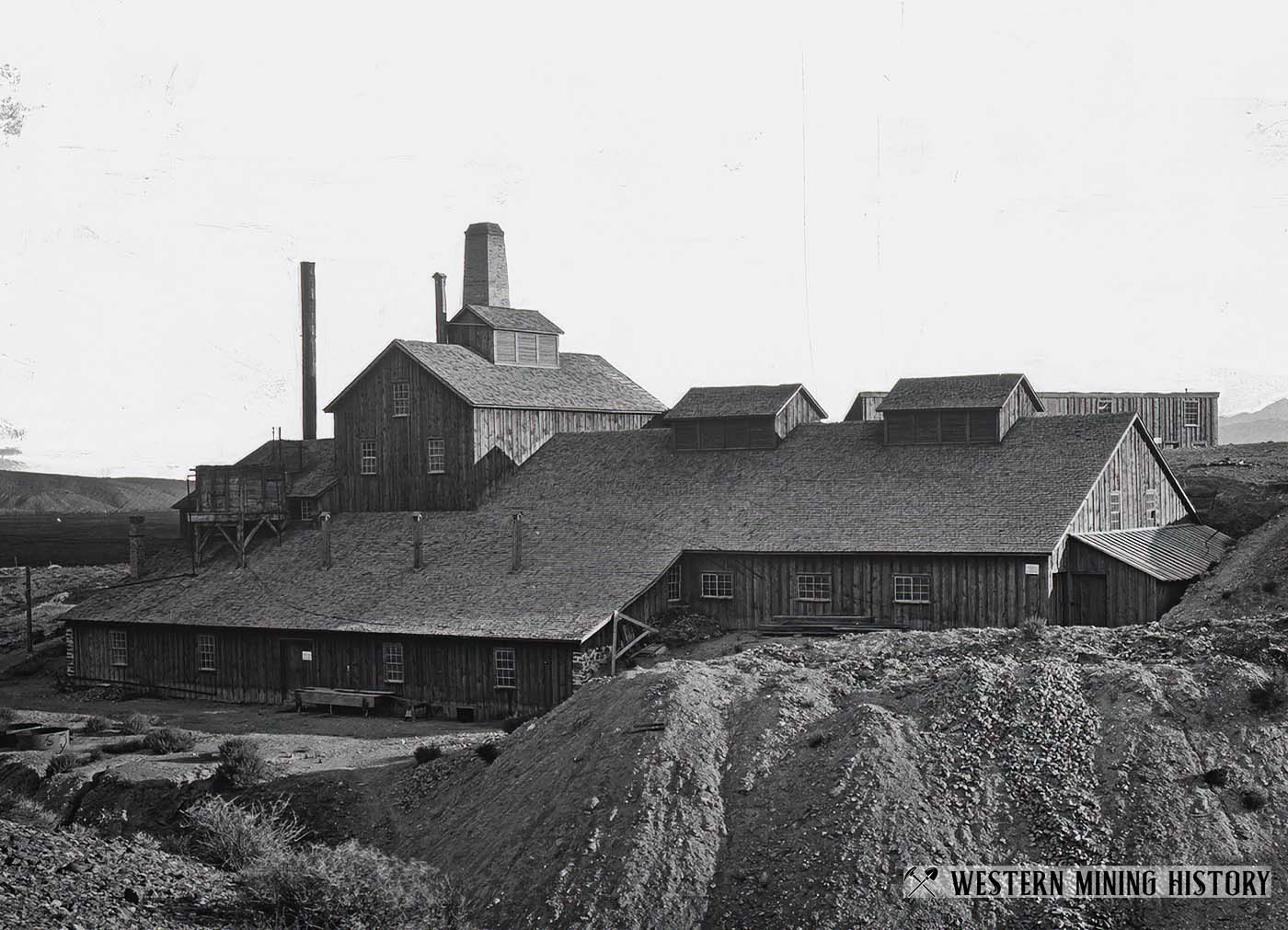Hiko History
Hiko was the center of the Pahranaget Lake mining district. The town was of some importance in the 1860s yet no early photos of the settlement remain and not many details of the community were recorded.
Hiko was the first settlement of any size in a vast area of what was wilderness at the time. The extreme isolation of the town is illustrated in an 1869 government report that described the overland mail routes:
From Beaver [Utah], by Greenville, Minersville, and Panaca, to Hiko, Nevada, 195 miles and back, once a week.
Although Hiko only had a few good years in the late 1860s, and lost the county seat to Pioche in 1871, a community persisted here for many years. There was some excitement around 1880 when it was thought the Eureka & Colorado railroad might extend through the town, a hope that never became reality. This excitement appears to have attracted artist Walter S. Long, who painted two scenes from Hiko in 1879 and 1880.
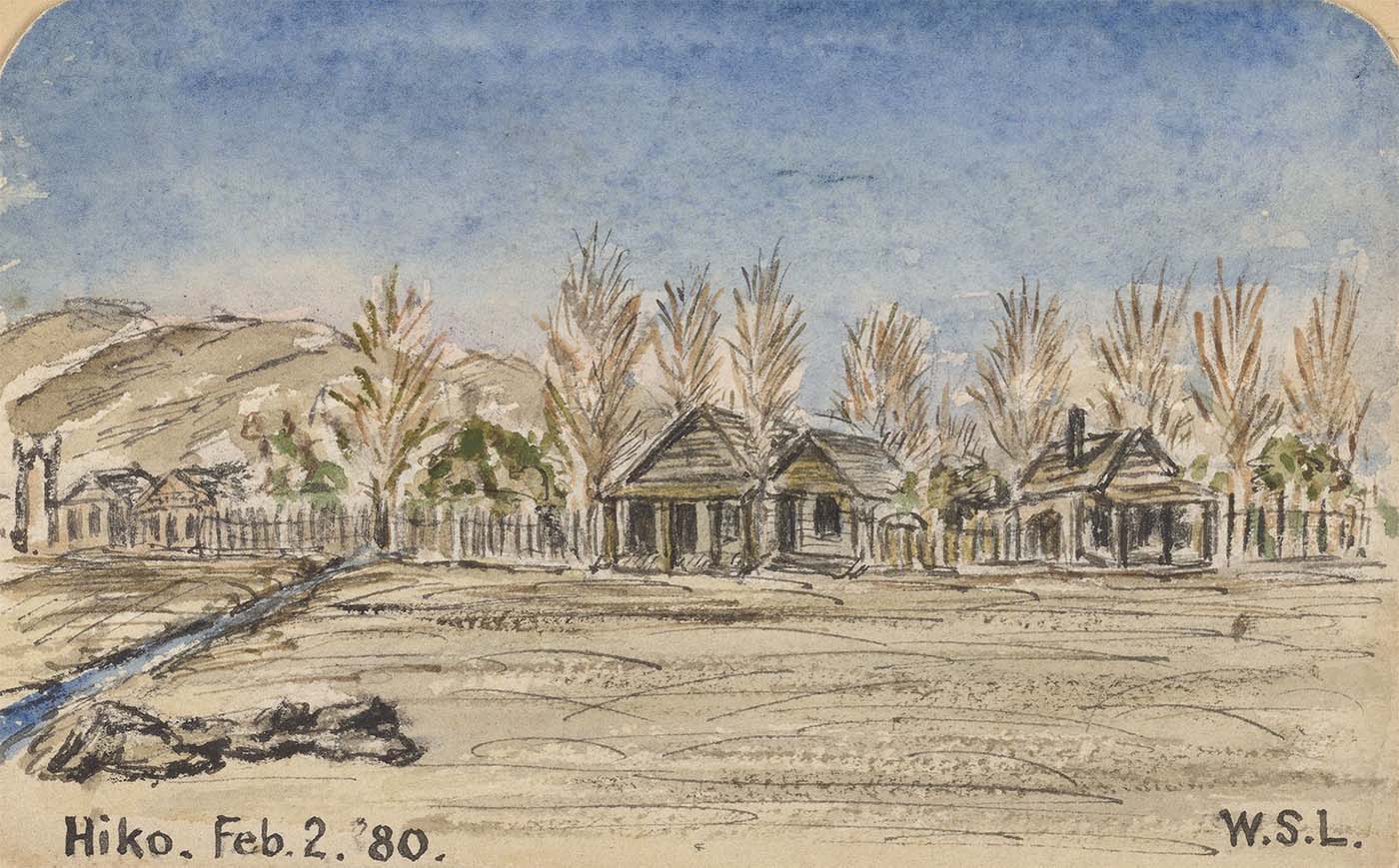
The rest of this page will present articles and documents that give insight into the events that shaped Hiko, and what life was like for the people of the region at this very early period in the development of Nevada.
A Brief History of Hiko
The following text is from a historical marker at the town site.
As early as 1865, a camp was established here and in the Spring of 1866, Colonel W.H. Raymond and others laid out the townsite. Hiko, situated in the Pahranagat range of mountains, is an Indian expression for "white man's town."
Raymond, with Eastern capital, purchased the machinery for a five stamp mill and had it shipped via the Colorado River to Callville, then hauled by oxen the 140 miles to this site. In November, 1866, milling was begun on Pahranagat ores and soon after, Hiko became the first county seat of Lincoln County in March 1867.
Raymond spent nearly $900,000 building roads, erecting dwellings, setting up the mill, prospecting and mining before the enterprise failed. The mill was moved to Bullionville in 1870 and consequently, Hiko declined in population and importance. The decline was accelerated after the removal of the county government to Pioche in February, 1871.
Early Description of Hiko
The following text is from the 1869 publication "Reports on the property of the Hyko Silver-Mining Company." The company used the alternate spelling "Hyko".
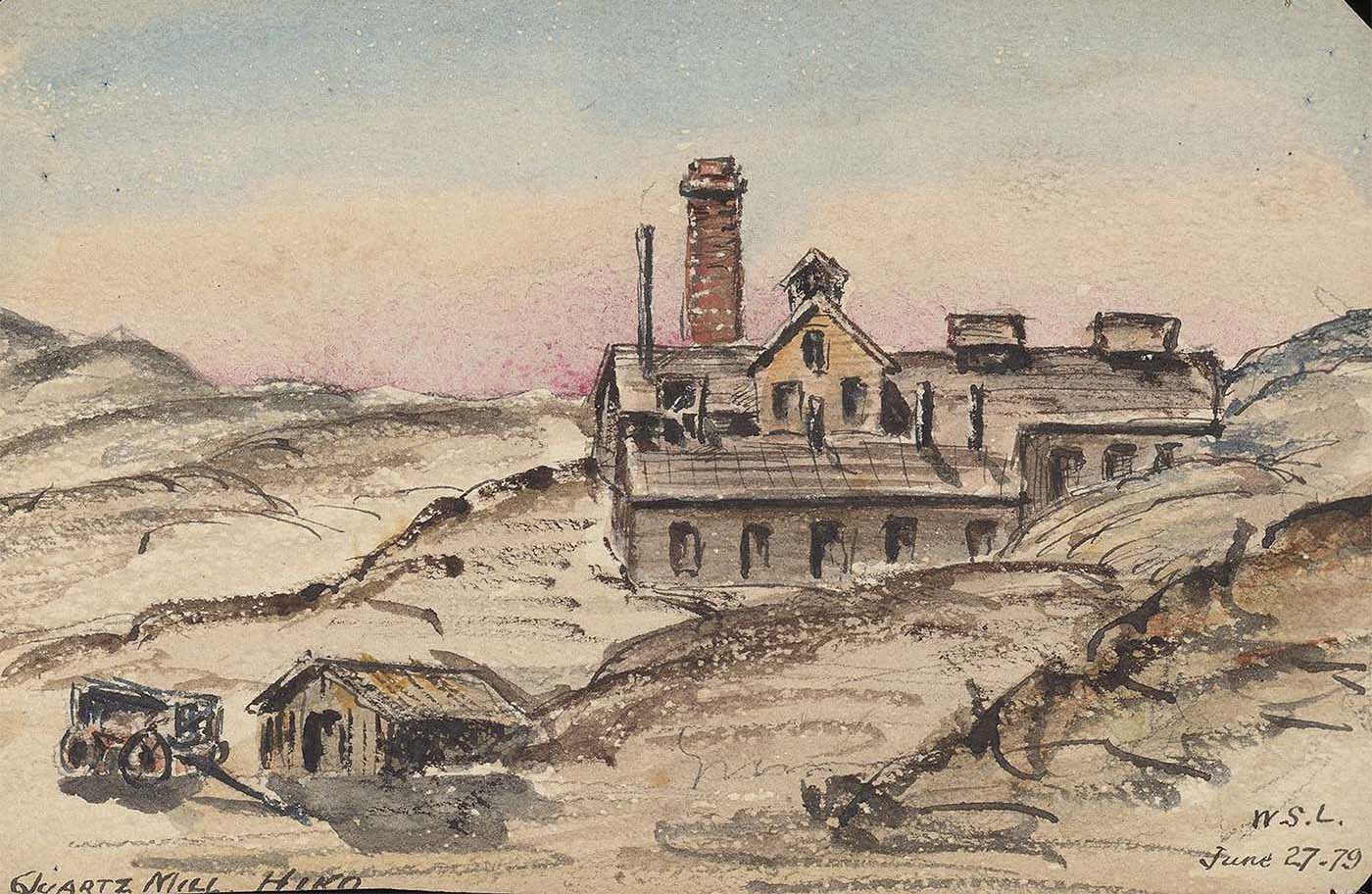
Hyko Valley is about the centre of the district, is thirty miles long and one mile wide. At the head of it is located Hyko City, a brisk young town of five hundred inhabitants and seventy houses. Among the latter are several large stores, boarding-houses, etc. Hyko City is the largest settlement in the district. It is the seat of Lincoln County, and contains a court-house and post-office.
Mill No. 1 of the Hyko Company is built on the western edge of the place. The valley is abundantly supplied with water, which can be said of very few localities in the Great Basin.
Hyko Spring, at the head of the valley, gushes from the base of the mountains on the east, and yields water sufficient to supply fifty large mills. Crystal Spring, in the centre of the valley, is still larger; and Ash Spring, twelve miles below Hyko, discharges water enough to form a little river. Water is obtained anywhere in the valley by boring from ten to twenty-two feet.
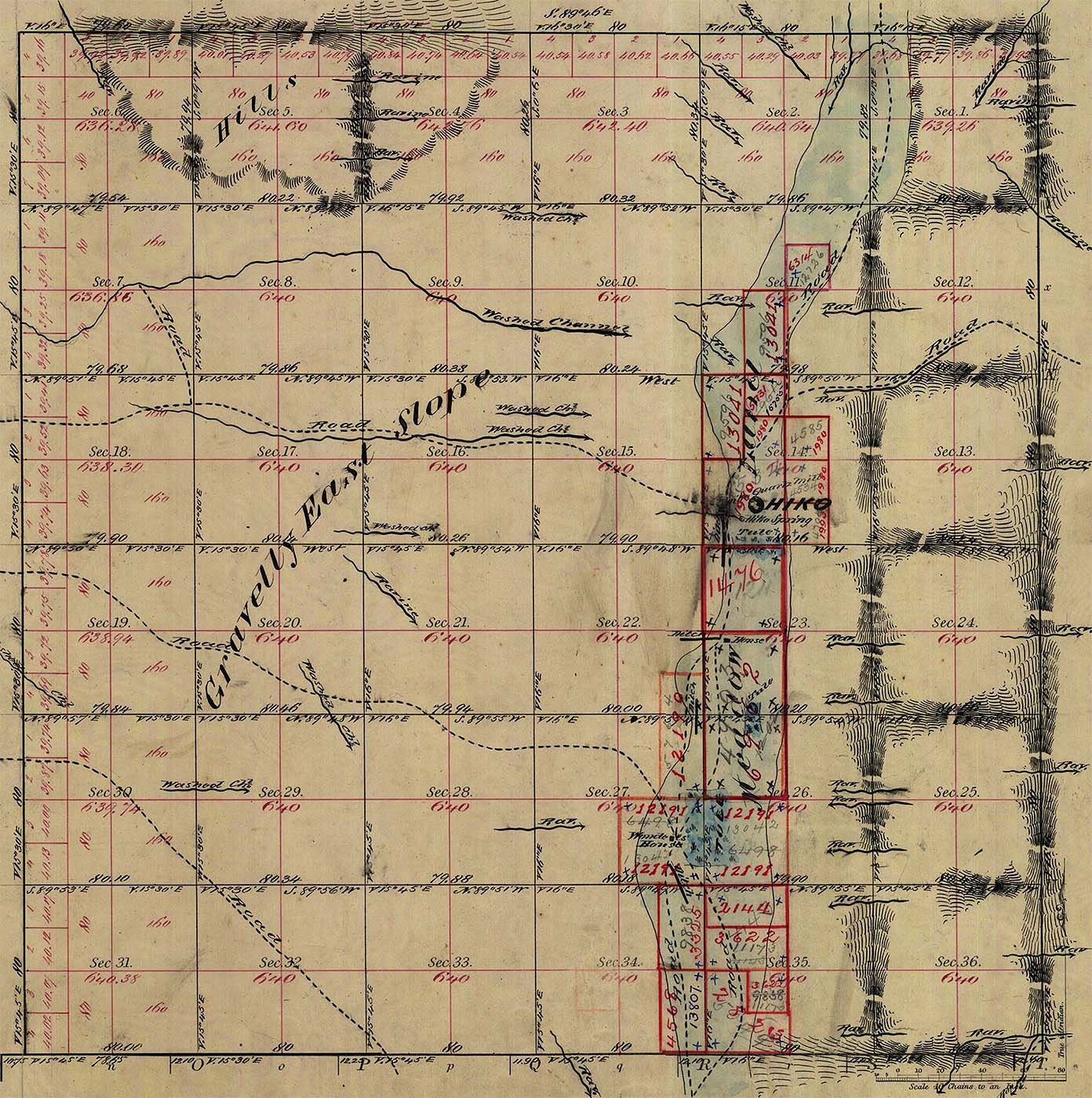
Homicide at Hiko
The following article appeared in the April 10, 1868 edition of the Gold Hill Daily News. This article illustrates the violence that was common in many Nevada mining camps during this period, but also has a unique bit of history that relates to Gold Hill, Nevada.
Jake Colburn is noted as being the builder of the "What Cheer Hotel" in Gold Hill, of which a photo has survived. It is rare for individuals that made the news over 150 years ago to have photographic evidence survive that has some connection with their lives.
A man named Frank Pitt was stabbed and instantly killed at Hiko, Lincoln county, on Sunday, the 28th ultimo, the particulars of which are given in the following extract from a letter to a person in this city:
"We had quite a lively day here last Sunday. A young man by the name of Frank Pitt, who was in Austin a short time ago, was killed by a man named Jake Colburn. The latter built the What Cheer House in Gold Hill, and kept it in 1862."
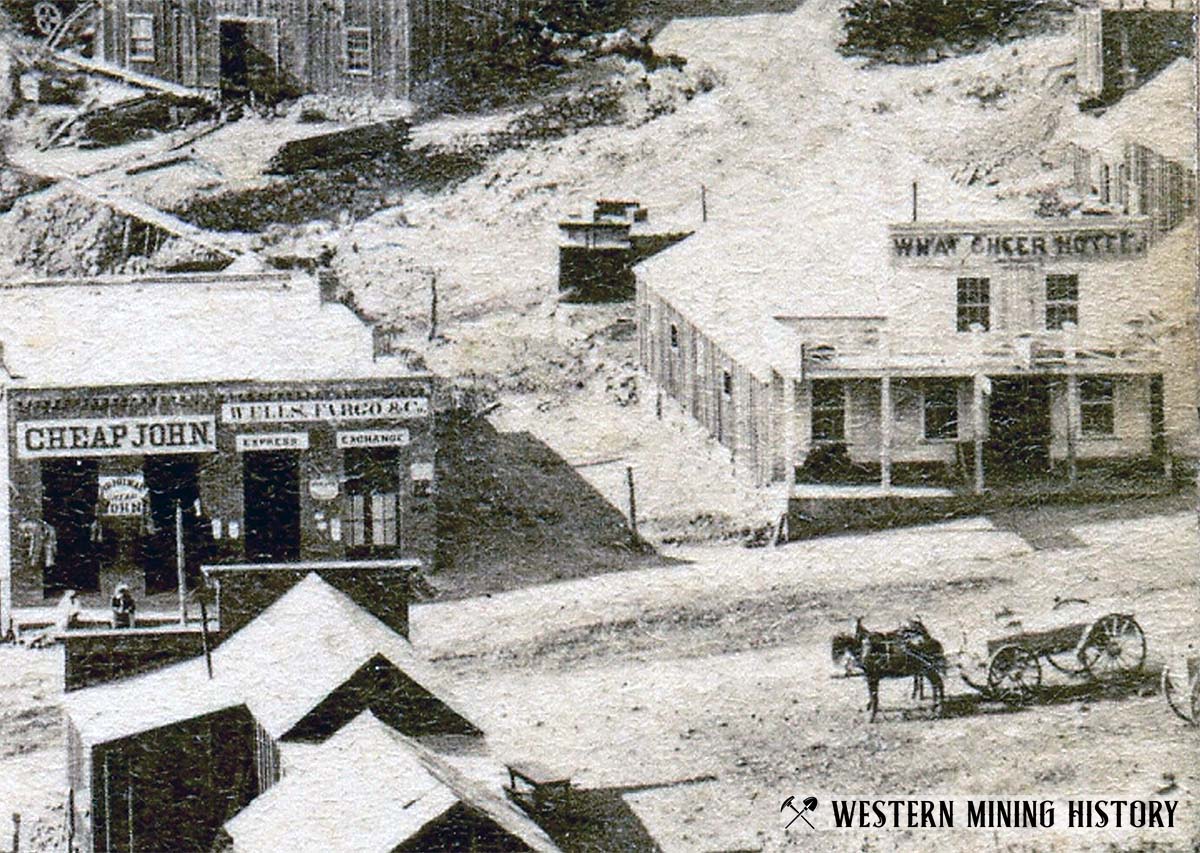
"The men were in partnership in a faro and monte bank, and some misunderstanding arose between them. Pitt followed Colburn into Felsenthal's store and began to abuse him; then he went to his own saloon and buckled on his pistol and returned to the store, when he again fell to abusing Colburn."
"Colburn told him he did not want any trouble with him, but that what he had said about him was not the truth. Pitt called him a liar, and began to draw his pistol, when Colburn caught hold of it, and immediately drew a knife and stabbed Pitt, which killed him instantly. The coroner's jury rendered a verdict of justifiable homicide."
Pitt, who lost his life thus suddenly, appeared to be a foolish and reckless young man, who was impelled by the stupid ambition to be known as a desperado. On his way to this city a few weeks ago he passed through Belmont, where he entered a saloon in which a party was playing at billiards, and very deliberately drew his pistol and fired into the table.
That act of senseless folly might have cost him his life, but he was only arrested and fined. Other pranks indulged in while at Belmont led to his being fined to the extent of a couple of hundred dollars. His death by violence was a foregone conclusion. -Reese River Reveille.
A Lucky Prospector
The following article appeared in the November 26, 1869 edition of The Carson Daily Appeal.
The Inland Empire tells of a prospector who left Hamilton some months since for some new mines about one hundred miles to the southward of that place and who, having struck a mine took two tons of his ore a long distance and had it reduced at a mill at Hiko. The Empire proceeds to say:
After paying all expenses the bullion from the two tons of ore netted him nearly six hundred dollars per ton, with which be bought him some mining tools, some flour, bacon and whisky, and going back, fixed him a cabin and has now set down to his Winter's task of developing his mines, and dreaming of how much money he will be throwing away when he sells out for a million in the Spring.
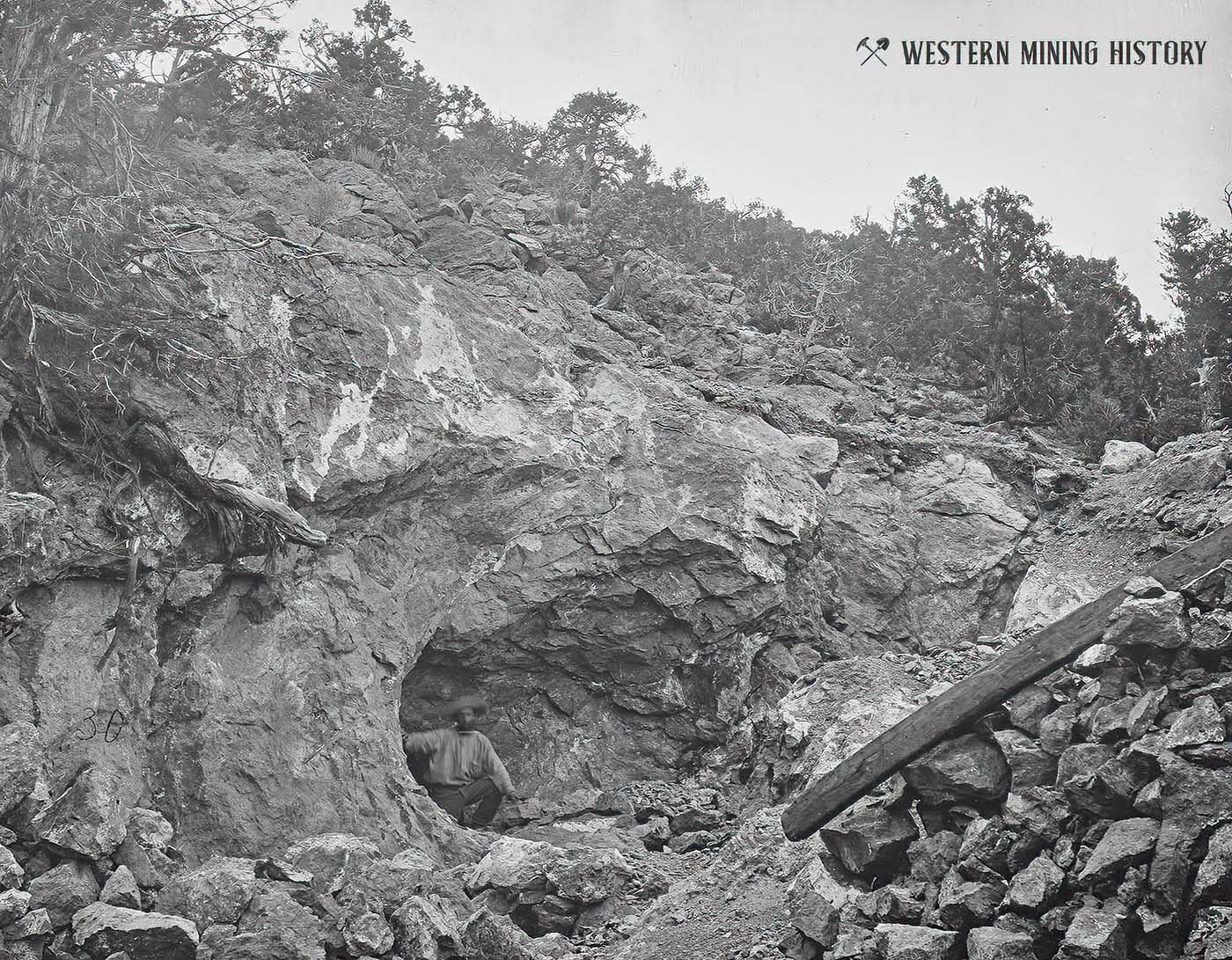
It strikes us that it would be pretty good sense for a man with such diggings as those to keep on getting out ore and taking it to the mill.
Nevada Mining Photos
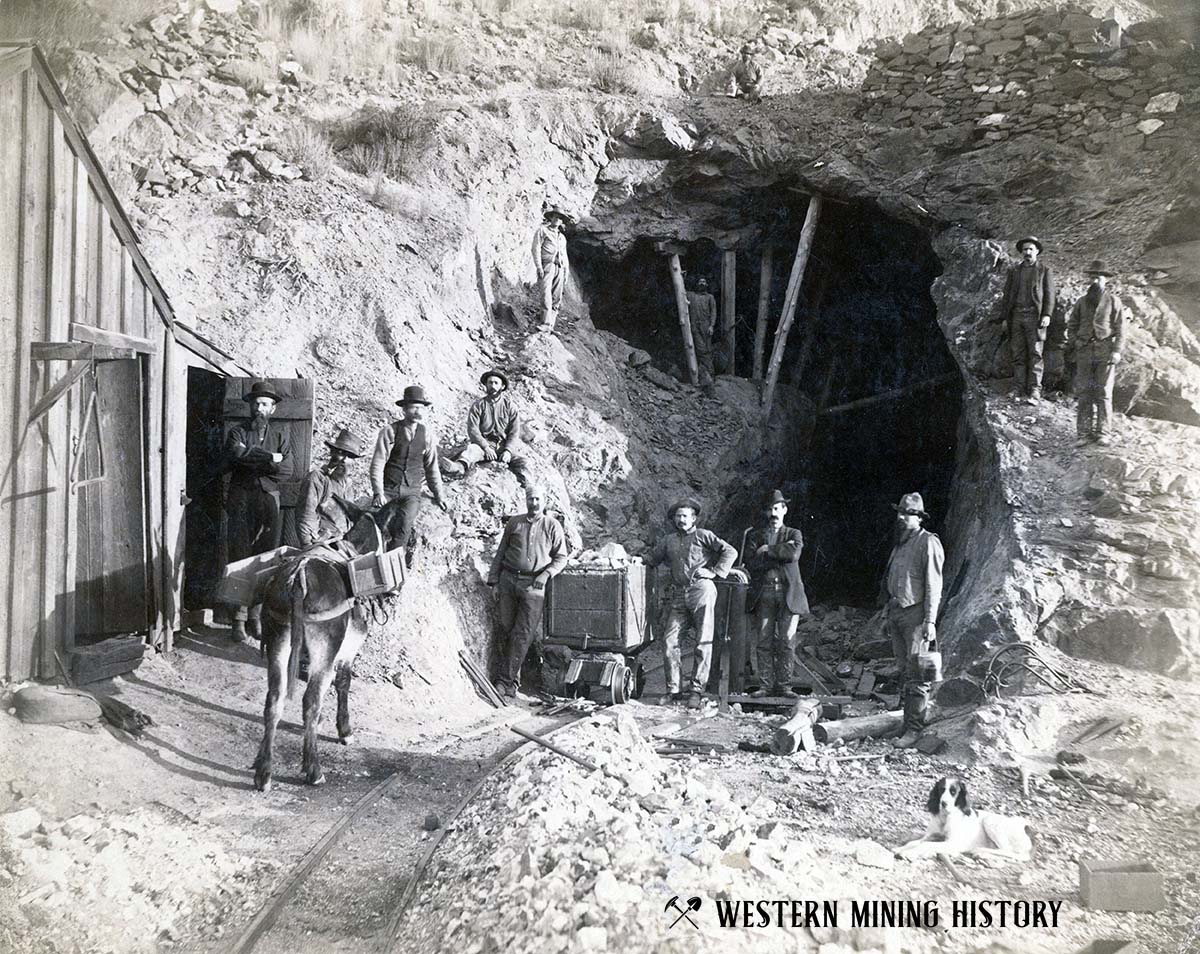
A Collection of Nevada Mining Photos contains numerous examples of Nevada's best historic mining scenes.
Nevada Gold

Nevada has a total of 368 distinct gold districts. Of the of those, just 36 are major producers with production and/or reserves of over 1,000,000 ounces, 49 have production and/or reserves of over 100,000 ounces, with the rest having less than 100,000 ounces. Read more: Gold Districts of Nevada.
